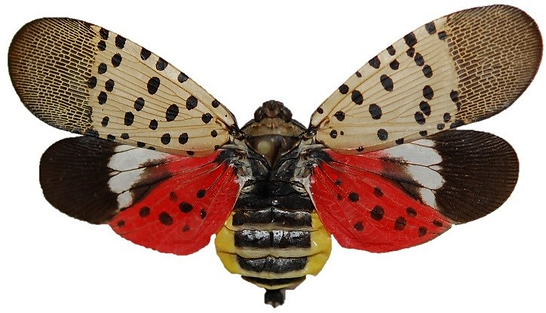As I was leaving a restaurant the other day, I finally saw my first spotted lanternfly. Actually I couldn’t avoid it because it hopped right into my face! I had heard so much about them and was warned to kill them on sight, but I started wondering, what is a spotted lantern fly? Is it as destructive as predicted by horticulturists, and, if so, what can we do about them?
(Some of the links within this post are affiliate links on which I receive a small compensation from the sale of certain items with no extra cost to you.)
What is a Spotted Lanternfly?
A spotted lanternfly, also known as lycorma delicatula, looks like a cross between a bumblebee and a butterfly. In its adult stage it has a bee-like body surrounded by butterfly-like wings. When closed, the wings are grayish-brown with mottled black spots. When the wings spread open, they have beautiful spotted red, white and brown striped underwings. But don’t be mislead by their beauty. These bugs are extremely destructive.
These insects are also known as lanternmoths, although they are neither a fly or a moth. They belong to the Order Hemiptera which include cicadas and hoppers, and the Family Fulgoridae known as planthoppers.
Lanternflies are poor fliers and are known for their hopping and running ability.
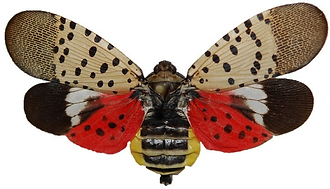
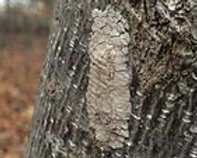
Three Major Life Stages
Egg
They have 3 major stages in their lives. First is the egg stage which happens between October and June. This stage is the most crucial stage, as killing the insect is easiest during the egg stage. They look like tiny black jewels bedazzled with white spots.
Nymph/Instar
The next is the nymph or instar stage which consists of 4 stages stretching between May and September. During this time, they transform from eggs to adults. During the first 3 instar stages the lanternfly appears black with white spots. They acquire their red patches over the black and white spots during its final instar stage. The lanternfly also grows to its full size of about one inch long and half an inch wide during this final stage.
Adult
The last stage is the adult stage lasting from September through December. This is the egg laying stage. It’s imperative to kill the females before they begin laying eggs.
A spotted lanternfly typically lives for one year. During the egg laying stage, a female will usually lay 2 egg masses. Each mass will produce 30 to 50 offspring.
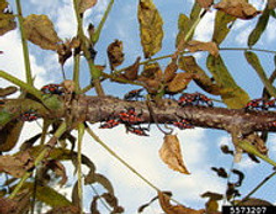

Origins of the Lanternfly
Lanternflies are native to China, India and Vietnam. They have also been sited in South Korea. Due to our global economy, it is believed the eggs of the lanternfly attached themselves to stone shipped to the United States from Asia. The first siting in the United States was in Berks County, Pennsylvania.
To try and contain the spread, 14 counties in the state were placed under quarantine. The residents of these counties needed to get a permit in order to transport specific items such as mulch, tree bark and decorative stone across county lines. However, the eggs were easily spread from state to state by unknowing people moving infested materials or items containing egg masses.
The egg masses latch onto hard surfaces such as trains, cars, boats, and trucks. It is extremely difficult to control the spread of the insect from one place to another.
The authorities have been moderately successful in containing this invasive insect. However, they have not entirely contained them. As of July, 2021, the lanternflies have spread in the United States to Maryland, Pennsylvania, parts of southern New England and the Mid-Atlantic, Ohio and Indiana.
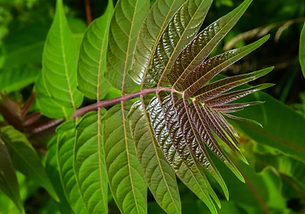
How and What Do They Destroy?
The agricultural industry is very much at risk from these invasive insects. They feed on more than 70 types of crops and plants, such as grapes and hops, (oh no! our beer and wine!). They also on a variety of trees including oak, apple, peach, deciduous sumac, and pine.
Lanternflies are extremely destructive due to their feeding process. Rather than eating leaves from a plant, although they do eat leaves, they attach to the stems and trunks of plants with their unusual specialized mouths. Here, they suck out the sweet tasting sap which provides nutrients to the plant. This greatly weakens the plant just before winter jeopardizing its ability to survive.
As a byproduct of the lanternfly feeding on the sap of trees and plants, it secretes a gooey honeydew-like sap. This sap sticks to cars, decks, pets, clothing and your hair. Subsequently, this sap is a growth medium for sooty mold that, when mature, further weakens the plant and makes fruits unmarketable. The mold reduces the sweetness of grapes and fruit causing the produce to be worthless.
The plants don’t have a chance and farmers are unable to bring them to market.
In addition to the agricultural industry, the abundance of spotted lanternflies adversely effects tourism, forestry, and the businesses and lifestyles of residents. In some quarantined areas of the country, residents are forced to live inside because of the gooey sap covering outside areas. The “honeydew sap” that is produced also has a foul fermentation odor that permeates the air.
How Do We Get Rid Of Them?
In the Egg Stage
If you see spotted lanternfly eggs on hard surfaces or vegetation, there are a few things you can do. First, if they are limited to a stem or two of your plants, cut them off, double wrap them in plastic bags and throw them away.
Second, scrape the eggs off a hard surface and place them in hand sanitizer or rubbing alcohol to kill them.
The Nymph Stage or Instar Stage
This is the stage when the nymphs are very mobile, climbing up and down tree trunks and branches. To deter them from traveling, place a wide sticky band around the lower end of an uninfected tree. This will capture the nymphs and eventually kill them.
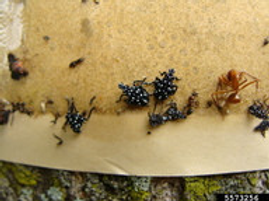
The “tree of heaven” otherwise known as Chinese sumac, varnish tree, stinking sumac and stink tree, is highly desirable to spotted lanternflies. It is wise to put a sticky band on this variety of tree.
You may want to wrap the sticky band with a cage or wire to protect good animals, like birds, from accidentally getting stuck to the strip.
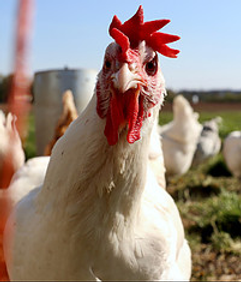
Adult Stage
There are a few predators that seem to be effective in controlling the population of spotted lanternflies. These include some birds and insects. One insect seen eating the lanternfly is a preying mantis. You can learn more about them in my post “Beneficial Garden Insects”.
Some varieties of birds seen chomping down on these dangerous insects are woodpeckers, Carolina wrens, bluebirds, chickens and ducks.
Other Ways To Kill The Spotted Lanternfly
Here is a list of safe ways to try and control the flies.
- Smash the bugs with fly swatters, wiffle ball bats, or your feet, with shoes on of course!
- If they are on weeds, spray them with vinegar. They will die instantly. Be careful, though, because vinegar kills all vegetation.
- Suck them up in a shop vac if they are attached to your home or any other hard surface. Put Dawn and water in the reservoir to kill them.
Dispose of them in a doubled plastic bag and throw them in the trash.
Any dishwashing liquid should work, but Dawn has been proven effective with this procedure. - Spray them with equal amounts of rubbing alcohol and water or equal amounts of dish detergent (Dawn) and water.
- Hold a bottle, for instance a Gatorade jar, in front of their faces. The bug will jump into the bottle.
- Use an earth friendly soap insecticide like Safer-Insect-Killing-Soap.
- Plant milkweed. (Nature Hills)The spotted lanternfly seems to be attracted to this plant. The plant is poisonous to them. FYI–Milkweed is good for attracting Monarch butterflies! Refer to my post “What Attracts Hummingbirds and Butterflies” to learn more.
WARNING! According to Poison Control, “All parts of the plant contain toxic cardiac glycosides, which can cause nausea, diarrhea, weakness, and confusion in small amounts, and seizures, heart rhythm changes, respiratory paralysis, and even death in large amounts. Milkweed can also irritate the skin and eyes if touched.”
Spotted Lanternflies and What to do With Them
These flies, if left unchecked, will have a devastating effect on our lifestyle. Through learning about their life cycle, and how to eliminate them, we may be able to save the agricultural industry, tourism, forestry, and numerous other businesses. Not to mention keeping them from swarming around our homes and destroying our gardens and other vegetation!
I hope you learned a thing or two about these devastating insects. Please leave a comment below. I’d love to hear your thoughts on the subject.
Happy Gardening,
Nina

